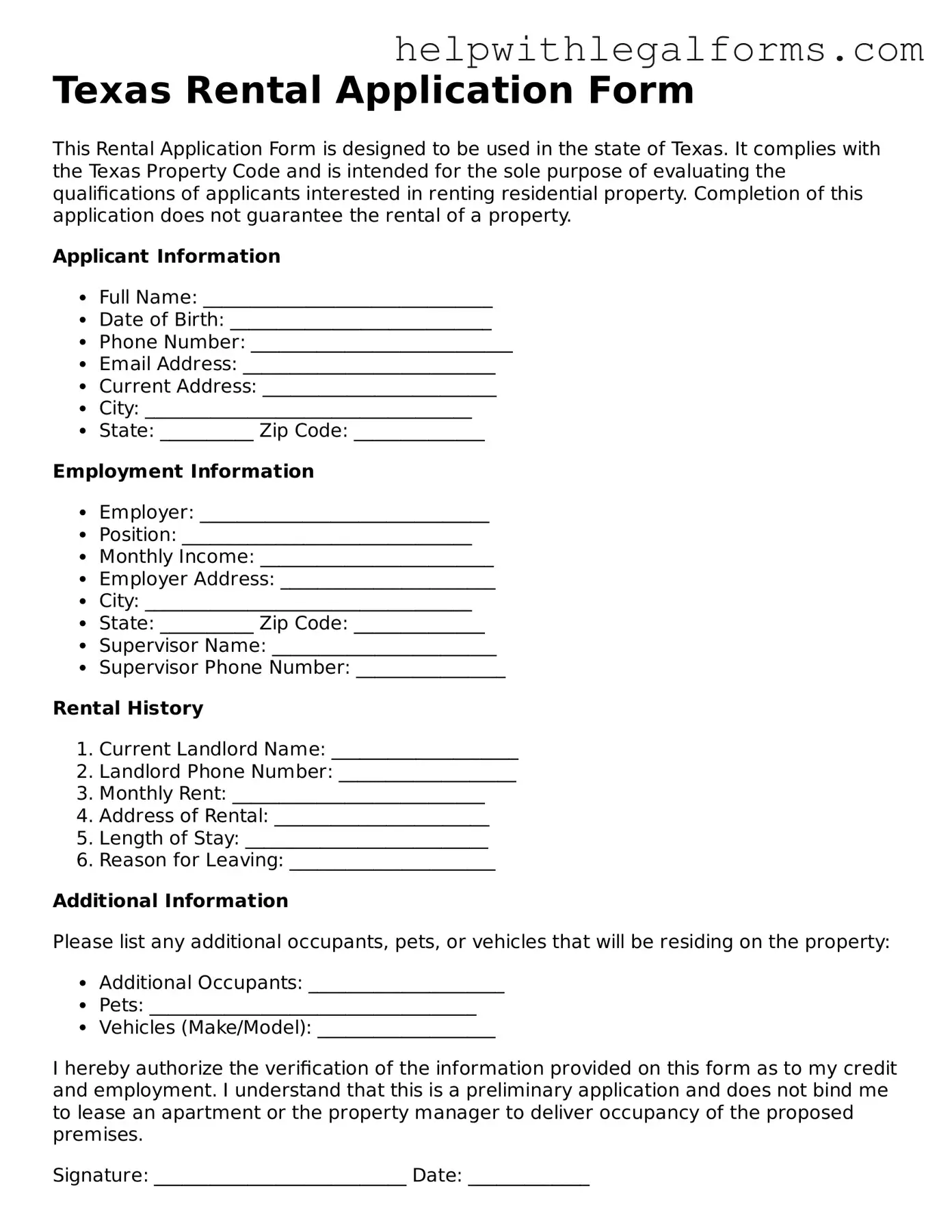What is the purpose of the Texas Rental Application form?
The Texas Rental Application form serves as a tool for landlords to collect detailed information from prospective tenants. This information typically includes personal data, rental history, employment status, and financial details. The purpose of this form is to assist landlords in assessing the suitability of applicants for tenancy, aiming to ensure that prospective tenants will be able to fulfill the terms of the lease and maintain the property responsibly.
Is there a fee to submit a Texas Rental Application form?
Yes, landlords often charge a fee to process a Texas Rental Application form. This fee covers the cost of conducting background and credit checks on the applicants. The amount of the fee can vary, but it must be reasonable and is usually specified by the landlord in the application process. It's important for applicants to inquire about the amount before submitting their application.
What kind of information do I need to provide on the Texas Rental Application form?
Applicants are typically required to provide personal information such as full name, date of birth, social security number, phone number, and email. In addition, rental history information including previous addresses, landlord contact details, and reasons for moving, employment and income details, as well as some references, may be required. This comprehensive information helps landlords evaluate the applicant’s reliability and financial stability.
How long does the landlord have to make a decision after receiving my application?
There is no legally mandated timeframe for landlords in Texas to make a decision after receiving a rental application. However, it is common practice for landlords to respond within one to two weeks. This period allows them to conduct necessary background and credit checks. Applicants can always ask the landlord for an estimated decision-making timeline.
Can I be rejected based on the information provided in my Texas Rental Application form?
Yes, landlords have the right to reject applicants based on the information provided in the Texas Rental Application form, as long as the reason for rejection is not discriminatory and complies with fair housing laws. Common reasons for rejection include poor credit history, insufficient income, negative references, or a history of evictions.
What happens if my Texas Rental Application is rejected?
If your application is rejected, landlords are generally not required to provide a reason for their decision. However, if the rejection is based on negative information found in a credit report, the applicant is entitled to a notice that explains how to get a free copy of the report. Applicants also have the right to dispute any inaccurate information contained in the report that influenced the landlord's decision.
Is the information I provide on the Texas Rental Application form kept confidential?
Landlords are expected to maintain the confidentiality of the information provided on Texas Rental Application forms. Personal and financial details should be protected and only used for the purpose of processing the rental application. However, applicants should always ask landlords about their privacy policies regarding the handling and storage of application documents to ensure their information is properly safeguarded.
